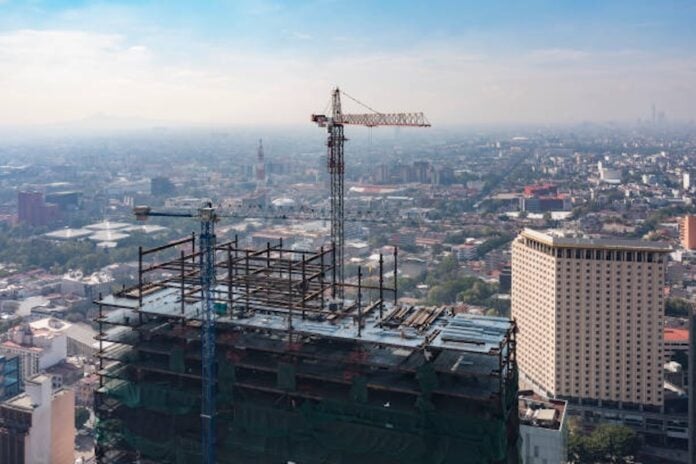The construction industry in Mexico has been in freefall for 17 months, alarming industry leaders who had called earlier for a doubling of public investment in infrastructure.
The September survey of construction companies, carried out by the national statistics agency INEGI and released Monday, found that the downward trend identified since April 2024 has intensified.
Industry performance as measured by the value of construction output reached 48.86 billion pesos (US $2.65 million) in September, a slump of -15.4% compared to September 2024. The month-to-month performance also slipped for a third consecutive month, coming in at -1.5% compared to August 2025.
The drags on the month-to-month indicator were the oil and petrochemical sector at -13.8% and the transport and urbanization subsectors (-4.0%).
Annualized performance metrics slipped close to levels seen in 2021 before the construction boom prompted by the flagship works of the previous administration.
The INEGI survey found that civil engineering continued to show the greatest weakness, with a year-on-year decline of -29.1%. Building construction showed year-on-year growth of 1%, although the monthly figures registered three consecutive declines, with September’s decline hitting -1.5%.
The slowdown has also sent construction workers to the unemployment line.
On an annual basis, in September 2025, the total employed personnel showed a reduction of 9.9% and hours worked in construction companies fell 0.1% compared to the previous month and decreased 11.2% year-on-year.
As the federal government prepared its 2026 budget package earlier this summer, industry leaders pleaded for public investment in light of the challenges ahead of next year’s World Cup, which is expected to attract 5 million visitors to Mexico.
Finance Ministry unveils 10 trillion-peso budget with 18% increase to welfare spending
Pointing to the downward trend in the sector, CMIC president Luis Méndez said the lack of resources is a major contributor to the decline in an industry that contributes 7% to national GDP and generates roughly 4.7 million jobs.
The government’s decision earlier this year to approach debt reduction by shrinking public investment (rather than welfare programs) has drawn criticism from other quarters, as well.
The National Bank of Public Works and Services (Banobras) projected that 2.67 trillion pesos (US $144.7 billion) is needed to close infrastructure gaps, trigger economic growth and promote regional connectivity.
Méndez said the World Cup afforded the perfect opportunity to increase infrastructure spending, citing shortcomings in tourist infrastructure in the three cities where games will be played: Mexico City, Guadalajara and Monterrey.
The CMIC emphasized a willingness to collaborate with the federal and state governments to define investment mechanisms that combine public and private resources.
With reports from La Jornada, El Economista, Ámbito Financiero and El Universal
